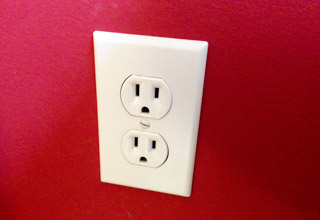By Josh Cosford
In my last blog, I squared hydraulics off against pneumatics in a battle to decide the champion of fluid power. The judges called it a draw, because the competitors simply weren’t in the same weight class. Hydraulics is the super heavy-weight of mechanical motivation, with power to spare, but not always light on his feet. Pneumatics can float like a butterfly and string like a bee, but he likes it just fine in the featherweight class. What about the new kid in the ring; electrics? Where does he weigh in?
Using electric motors as a link in the chain of mechanical drive systems isn’t really all that new, to be fair. For years, electric motors have been the prime mover of choice in industrial settings, but in the majority of applications, the motor doesn’t directly drive the mechanical output. Motors have been attached to pumps, pulleys, sprockets, gears, transmissions et al. The reason intermediate forms of power transmission were required was because motors weren’t so easily stopped, started, reversed and varied in speed.
Because technologies that can slow down, speed up and even reverse electric motors have been developed, and then subsequently reduced in cost, the world of machinery has evolved drastically. The cost of variable frequency drives or synchronous motors is now reasonable enough to directly drive mechanical applications (including hydraulic pumps)—but is the fight of hydraulics vs electric fair for either contender? Are they even in the same weight class?
Hydraulics is unique in the world of power transmission because it owns the trump card of power density. There is no more compact method of mechanical actuation than with hydraulics when considering power to size ratio. The number of oil molecules able to be packed into a hydraulic cylinder or motor to create force is limited only by the construction and material of the design. However, with electric actuation, even super-cooled superconducting motors are ultimately limited by their ability to create magnetic fields powerful enough to match hydraulics. For instance, one can easily see the potential of hydraulics by considering the Rexroth A2F5 bent-axis piston motor, which can output 20 hp, weighs just 5.5 lbs and can fit in your coffee cup. (The downside is that you wouldn’t want to drink your coffee if you just had a hydraulic motor in your cup!)
The A2F5 is a tiny, high-speed motor, but conversely, hydraulics work well on a scale one can consider downright ridiculous, like an 80,000 ton forge press. I’m not even sure what requires that kind of force to shape … cold tungsten or diamonds maybe? The force hydraulics can achieve is often limited to the strength of the machine itself, not the capacity of hydraulics to create force.
Nevertheless, electric motivation should not be given the standing eight count simply because hydraulics is buffed up on steroids, and walking around the gym leaving sweat and hair gel on all the machines. Electric power transmission is clean, efficient and accurate on levels hydraulics can’t match. Even when hydraulic machines are efficient and accurate, it’s because they’re laden with electronics like a teenager in the back seat of a minivan. Furthermore, the power density of electric actuators is increasing exponentially, and if hydraulics doesn’t get his butt in gear to further improve power density and efficiency, electrics will surpass hydraulics in every category … or will it?
Bold prediction alert! Hydraulics will never be replaced by electrics on mobile machinery in my lifetime. If anything, electric motors—say for wheel drives—may make their way into the mobile market, but there is simply no efficient, compact and reliable way for electric linear actuators to match hydraulic cylinders. Electronic integration and control will continue to permeate the mobile hydraulic market for improvements in efficiency and performance, but if you’ve ever discussed hydraulics with a farmer for more than ten minutes, you’d understand how difficult prying a level valve from their hands will be.
Josh Cosford is a Certified Fluid Power Hydraulic Specialist.



why differentiate between hydraulic, electric and pneumatic?
Each system has their pro’s and con’s and the top engineers are continually finding new ways to make hybrid systems that take advantage of all the “pro’s” available.
Hi Mr. Sunshine! I think we differentiate because, although you’re right about hybrids, the three motivations still overlap in similar applications. Presses can be powered by hydraulics, pneumatics or electrics, so it’s fun to consider how each machine would be different in execution of the same task.
Plus, it makes for an interesting topic to write about!